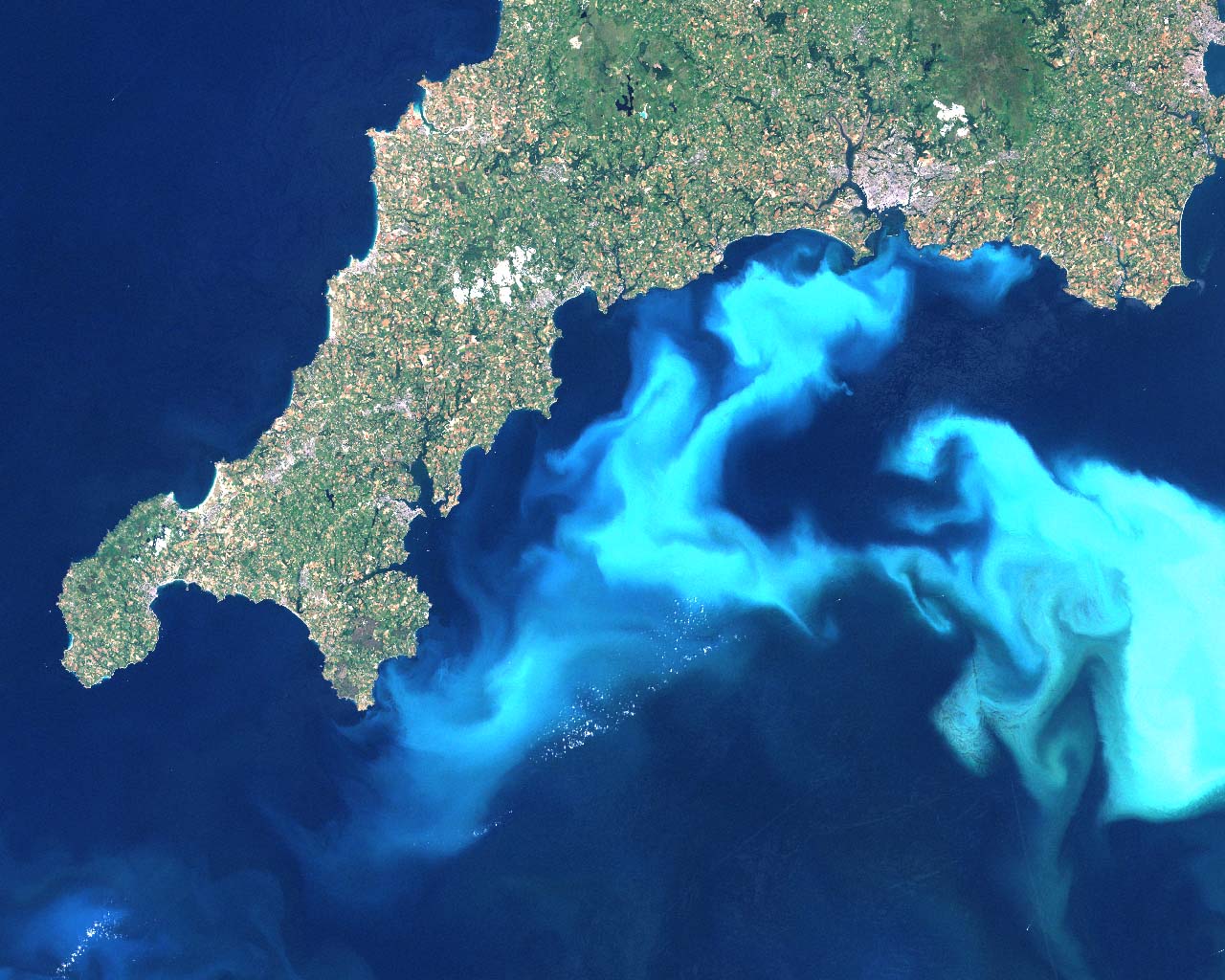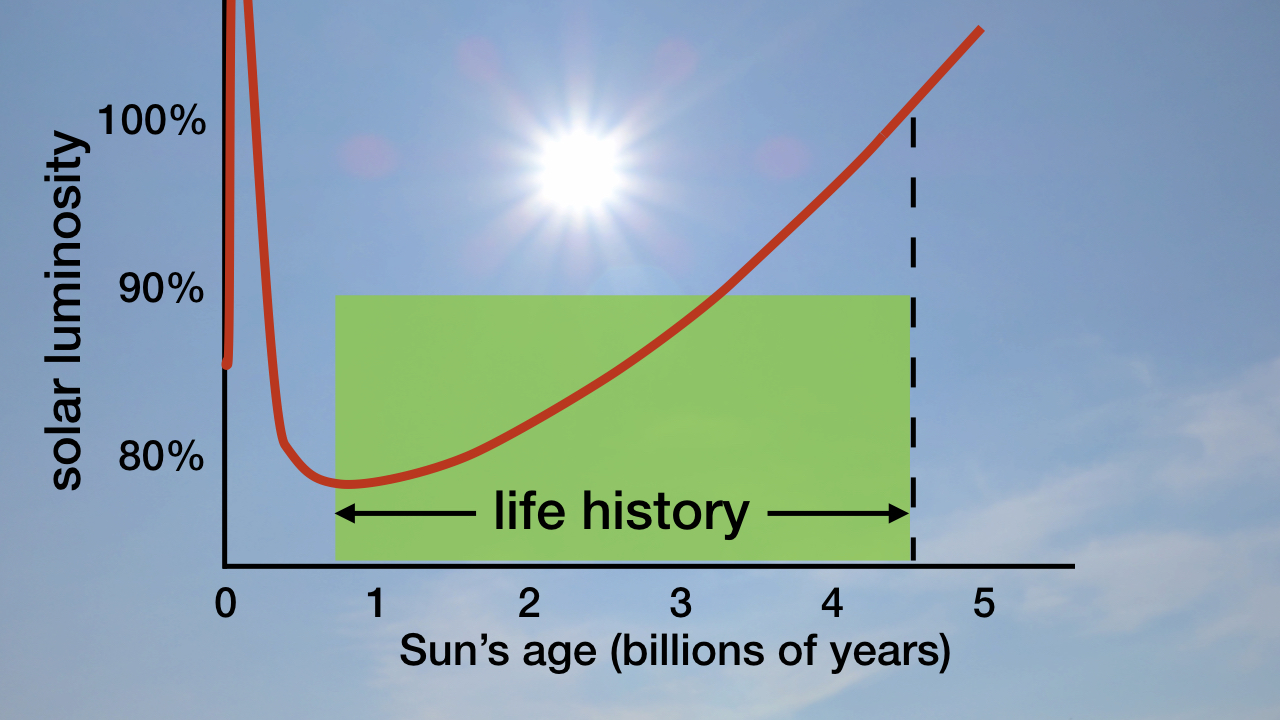Interplanetary Dust Delivery Allows Human Existence
Extraterrestrial iron dust delivery by means of exquisitely fine-tuned processes has made modern civilization possible. Scientists sought to discern the nature of an unknown part of a phenomenon—bioavailable iron on Earth—and their research led to a major discovery that was published in the October issue of Geology.1
Life has been present on Earth at a high abundance level throughout the past 3.8 billion years. While Earth’s continents possess the greatest diversity of life, it is the oceans that contain the greatest quantity of life—and the foundation for all this marine life is phytoplankton.
Phytoplankton Sustain Marine Life
Phytoplankton are microscopic organisms that engage in photosynthesis. They are primary producers in that they manufacture sugars, starches, and fats from water and carbon dioxide dissolved in water. These sugars, starches, and fats sustain the entire aquatic food web.
Phytoplankton account for more than half of all photosynthetic activity on Earth. When present at high-enough densities, some species are easily visible as colored patches on surface waters (see figure 1). Phytoplankton play a major role not only in sustaining marine life and diversity but also in removing sufficient quantities of carbon dioxide (a powerful greenhouse gas) from the atmosphere to compensate for the ever-brightening Sun (see figure 2).

Figure 1: Phytoplankton Blooms off the Southwest Coast of England
credit: NASA

Figure 2: The Sun’s Increasing Brightness throughout Life’s History. Image credit: Figure created by the author
What limits the quantity of phytoplankton in the oceans is the availability of iron—known as bioavailable iron—in physical and chemical forms that the phytoplankton can use.2 In most of the surface waters of the world’s oceans, the concentration of bioavailable iron is very low, less than 0.2 nanomoles (roughly less than 2 parts per 10 billion).3
Sources of Bioavailable Iron
Scientists have long thought that the bioavailable iron present in the oceans has been delivered by eolian dust. Eolian dust, otherwise known as loess, refers to silt-sized material deposited by winds blowing off of exposed continental landmasses, primarily deserts and plateaus. This flux of bioavailable iron from eolian dust is geographically highly variable. Ocean regions far from deserts and plateaus receive very little of this dust. The Southern Ocean, which comprises most of Earth’s surface water, receives just 0.2–5 micromoles/square meter/year of bioavailable eolian dust.4 (This figure includes not just bioavailable iron but all bioavailable metals.)
The delivery of bioavailable eolian dust to the Southern Ocean falls considerably short of what is needed to sustain the quantity of phytoplankton known to exist there. Thus, geologists Peter Reiners of the University of Arizona and Alexandra Turchyn of the University of Cambridge present evidence in their paper that the delivery of bioavailable iron from extraterrestrial dust makes up the difference.
They begin by citing ice, marine sediment, and terrestrial sediment core records that establish a present-day flux of 40 million kilograms/year of iron delivery to Earth from interplanetary space.5 Reiners and Turchyn calculate how much of this iron is bioavailable. For the Southern Ocean, they conclude that the present flux of bioavailable iron from interplanetary space is comparable to and likely larger than the flux from eolian dust.6
Implications of Present-Day Interplanetary Iron Flux
Reiners and Turchyn do not comment in their paper on the implications of such abundant extraterrestrial bioavailable iron delivery to the present-day Southern Ocean. However, the implications seem obvious. The Southern Ocean would not be able to sustain the enormous biomass and biodiversity that it does without this ongoing delivery. Nor would the phytoplankton in the Southern Ocean be able to remove enough carbon dioxide from the atmosphere to compensate for the brightening of the Sun.
Without the present high rate of extraterrestrial bioavailable iron flux, advanced life and human civilization would not be possible. In fact, global high-technology civilization requires that this flux be fine-tuned.7
Past Sources of Extraterrestrial Bioavailable Iron
Reiners and Turchyn devote most of their research paper to addressing several events during the past half billion years when the flux of extraterrestrial dust was many times higher than it is at present. The most dramatic of these events is the Ordovician L-Chondrite Event that, according to meteorite geochronology and terrestrial stratigraphic records, occurred 470±6 million years ago and produced the Ordovician meteorite shower 467.3±1.6 million years ago.8 This shower lasted at least 2 million years and the extraterrestrial material flux was 100–1,000 times higher than the present rate.
The Ordovician L-Chondrite Event was likely caused by a major collision event in the Main Belt (the asteroid belt between Mars and Jupiter) that resulted in the breakup of a single large asteroid.9 This collision was responsible for most, if not all, L-chondrite meteorites. Even today it accounts for about 40 percent of all Earth-bound interplanetary objects.
The end-Ordovician mass extinction event ranks as the second most devastating mass extinction event known. Half of all animal genera and about 85 percent of all marine species were wiped out.10 While much of this extinction resulted from major impacts associated with the Ordovician L-Chondrite Event, the extremely high flux of interplanetary bioavailable iron dust would have so enhanced marine primary productivity from phytoplankton as to greatly draw down carbon dioxide from the atmosphere. The drawdown of so much of this important greenhouse gas explains the widespread glaciation event that was associated with the end-Ordovician mass extinction event. The greatly enhanced phytoplankton productivity also explains the enormous deposits of oolite ironstones (resulting from increased oxygen concentrations in the oceans) and black shales (resulting from enhanced burial of organic carbon) that were laid down at this time.11
Similarly, Reiners and Turchyn show that three other major biological/depositional events, the late Miocene Veritas (8.3±0.5 million years ago12), end-Eocene (34.1–33.6 million years ago13), and Jurassic-Cretaceous (201–66 million years ago), were caused by much-enhanced fluxes of interplanetary bioavailable iron. The fluxes were 5, 6–10, and 4–10 times higher than the present flux, respectively.14 Each of these three events was accompanied by global cooling events and global depositions of oolite ironstones and black shales.
Implications of Past Interplanetary Iron Flux
As with present sources of interplanetary iron dust delivery to Earth, Reiners and Turchyn also decline to comment in their paper on the implications of past deliveries. Again, the implications seem obvious. Without the drawdowns of carbon dioxide that took place at each of the past four major iron dust deposition events, the increasing luminosity of the Sun would have heated Earth’s surface beyond the limit that life, especially advanced life, could withstand. Earth would have become a permanently sterile body long before the possible time window for human existence.
Without the much-enhanced productivity of marine phytoplankton, the treasure chest of biodeposits that presently exists would be much smaller. Lower reserves of biodeposits would have placed serious limitations on the capacity of humans to launch and sustain civilization. The maintenance of a human population in the billions—where those billions enjoy high-technology civilization—would not have been possible. Nor would it be possible for billions of humans to hear, understand, and respond in a brief window of time to Jesus Christ’s offer of redemption from sin. We indeed have many reasons to be grateful for bioavailable extraterrestrial iron dust being delivered to Earth in the just-right amounts at the just-right times.
Endnotes
- Peter W. Reiners and Alexandra V. Turchyn, “Extraterrestrial Dust, the Marine Lithologic Record, and Global Biogeochemical Cycles,” Geology 46 (October 2018): 863–66, doi:10.1130/G45040.1.
- Nazli Olgun et al., “Surface Ocean Iron Fertilization: The Role of Airborne Volcanic Ash from Subduction Zone and Hot Spot Volcanoes and Related Iron Fluxes into the Pacific Ocean,” Global Biogeochemical Cycles 25 (December 2011): id. GB4001, doi:10.1029/2009GB003761; P. W. Boyd and M. J. Ellwood, “The Biogeochemical Cycle of Iron in the Ocean,” Nature Geoscience 3 (September 26, 2010): 675–82, doi:10.1038/ngeo964.
- M. M. Morel and N. M. Price, “The Biogeochemical Cycles of Trace Metals in the Oceans,” Science 300 (May 9, 2003): 944–47, doi:10.1126/science.1083545.
- Reiners and Turchyn, “Extraterrestrial Dust,” 863.
- Bernhard Peucker-Ehrenbrink, Greg Ravizza, and Gisela Winckler, “Geochemical Tracers of Extraterrestrial Matter in Sediments,” Elements 12 (June 2016): 191–96, doi:10.2113/gselements.12.3.191.
- Reiners and Turchyn, “Extraterrestrial Dust,” 863.
- Hugh Ross, Improbable Planet: How Earth Became Humanity’s Home (Grand Rapids, MI: Baker, 2016), 180–219.
- Ekaterina V. Korochantseva et al., “L-Chondrite Asteroid Breakup Tied to Ordovician Meteorite Shower by Multiple Isochron 40Ar-39Ar Dating,” Meteoritics & Planetary Science 42 (January 2007): 113–30, doi:10.1111/j.1945-5100.2007.tb00221.x.
- Korochantseva et al., “L-Chondrite Asteroid Breakup,” 113.
- Peter M. Sheehan, “The Late Ordovician Mass Extinction,” Annual Review of Earth and Planetary Sciences 29 (May 2001): 331–64, doi:10.1146/annurev.earth.29.1.331.
- Reiners and Turchyn, “Extraterrestrial Dust,” 865.
- Alessandro Montanari et al., “Stratigraphic Record of the Asteroidal Veritas Breakup in the Tortonian Monte dei Corvi Section (Ancona, Italy),” Geological Society of America Bulletin 129 (April 19, 2017): 1357–76, doi:10.1130/B31476.1.
- X. Li et al., “Terrestrial Responses of Low-Latitude Asia to the Eocene-Oligocene Climate Transition Revealed by Integrated Chronostratigraphy,” Climate of the Past 12 (February 2016): 255–72, doi:10.5194/cp-12-255-2016; Rui Zhang, Vadim A. Kravchinsky, and Leping Yue, “Link between Global Cooling and Mammalian Transformation across the Eocene-Oligocene Boundary in the Continental Interior of Asia,” International Journal of Earth Sciences 101 (2012): 2193–2200, doi:10.1007/s00531-012-0776-1.
- Reiners and Turchyn, “Extraterrestrial Dust,” 864.
Check out more from Dr. Hugh Ross @Reasons.org





